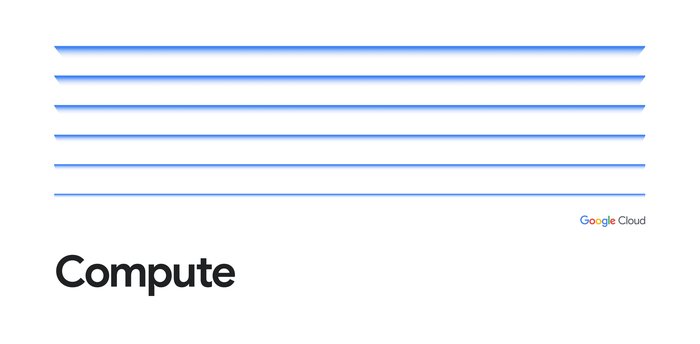The SAP migration journey from on-prem to Google Cloud for The Home Depot

Ajay Asthana
SAP Cloud Consultant, Google Cloud Consulting
Praveen Kaza
SAP Cloud Solution Architect, The Home Depot
Today’s consumers expect a connected experience, whether shopping online, in store, or both. When The Home Depot, the world’s largest home improvement retailer, adopted ambitious plans for building connected retail experiences across its entire operation, it faced a challenge: The company ran everything on-premises, from central finance to POS systems, creating redundancies and repetitive, manual processes. In addition, The Home Depot’s data warehouse needed an upgrade to process and analyze growing and increasingly diverse data sets.
To support the speed, scale, flexibility and advanced analytics capabilities needed for its bold digital initiatives, The Home Depot realized it needed to take an agile, cloud-first approach and chose to migrate its SAP environment to Google Cloud. As Sam Moses, Vice President of Corporate Systems, explains, “Our decision had a lot to do with the relationship between Google Cloud and SAP and also for the applications and services that are offered by Google Cloud, like BigQuery, which are helping to enable data and analytics within our organization.”
A four-stage migration process
The Google Cloud Professional Services Organization (PSO) team and The Home Depot project team executed the migration over four stages with minimal disruption: assessment, planning, migration, and optimization. Here’s a look at each of these steps individually, including lessons learned that can help your company consider and prepare for its own cloud migration.
Step 1: Assess existing infrastructure and organization.
A cloud migration involves significant changes within the organization, spanning people, process, and technology. To begin the migration journey, Google Cloud PSO and The Home Depot project teams collaborated to identify hardware and SAP applications running in the company’s data center with workloads that could migrate to Google Cloud quickly and with minimal effort. We defined requirements, dependencies, and other integration components for systems running in The Home Depot’s data center, considering the following factors:
Whether an application has dependencies and integrates with other applications
How critical the application is for the business
How difficult the application is to migrate, whether it requires an upgrade, or whether we can quickly perform a lift and shift of the workload
Step 2: Plan migration priorities and prepare the foundation.
Next, we created a full migration plan to move systems from the on-premises data center to Google Cloud. Developing a migration plan prevents issues during the migration and ensures that production go-live proceeds smoothly.
The first and most important step to creating a migration plan was for The Home Depot to establish a Google Cloud Foundation. During this process, we created the basic cloud infrastructure to support SAP workloads and applications. The resulting cloud projects formed the basis for enabling and using all Google Cloud services — for instance, configuring a Virtual Private Cloud (VPC) within Google Cloud and consuming Google Cloud resources such as Compute Engine, Storage, Network, Storage Bucket, and Kubernetes, among others.
Step 3: Migrate workloads in waves.
Organizations can take three approaches to migrating their SAP systems: carrying out a straightforward lift and shift, creating a new infrastructure in the cloud (greenfield implementation), or creating a hybrid infrastructure with a few functions in the cloud (brownfield implementation). To decide the most appropriate migration approach for The Home Depot, we defined a strategy based on the company’s migration triggers, business goals, and SAP workload priorities, focusing first on modernizing SAP systems that were critical to business workloads.
The Home Depot used all three types of migration, depending on workload — lift and shift for its SAP BW system, greenfield for SAP Financials, and brownfield for SAP Supply Chain Management.
Step 4: Optimize workloads and operations
After migrating workloads to Google Cloud, it is important to manage them to take advantage of newly available cloud capabilities and ensure systems and data are secure. For example, we helped The Home Depot’s team plan for high availability (for databases as well as SAP applications) and disaster recovery. You can use a combination of Google Cloud and SAP features in the design to provide high availability for SAP HANA and SAP applications that can handle failures at both the infrastructure and software levels.
Thanks to proper planning, testing, and optimization, it took less than five months to migrate six SAP landscapes to Google Cloud. After the migration, the two teams performed a full SAP volume performance test to compare the on-premises environment with the new Google Cloud environment. The results showed a 90% performance improvement in critical SAP transactions on Google Cloud Network latency for BW extraction jobs. Throughout the migration process, the Google Cloud PSO and Home Depot project teams continually assessed progress to revisit key strategies, identify wins, and glean learnings that we look forward to leveraging should you choose to deploy your own organization’s SAP environment in Google Cloud.
To read a detailed account of The Home Depot’s SAP migration to Google Cloud — including decision-making criteria at each step, timelines, reference architecture diagrams, and more resources — download the white paper.



